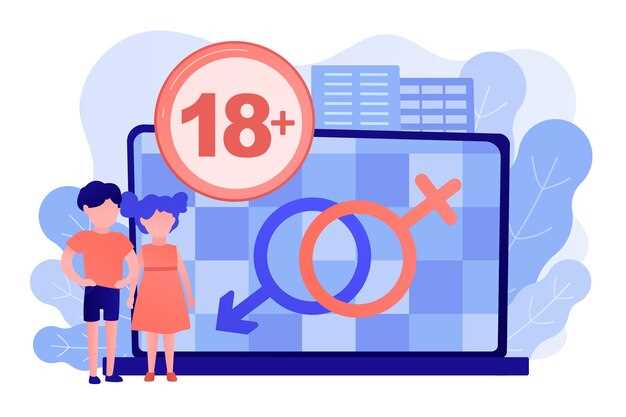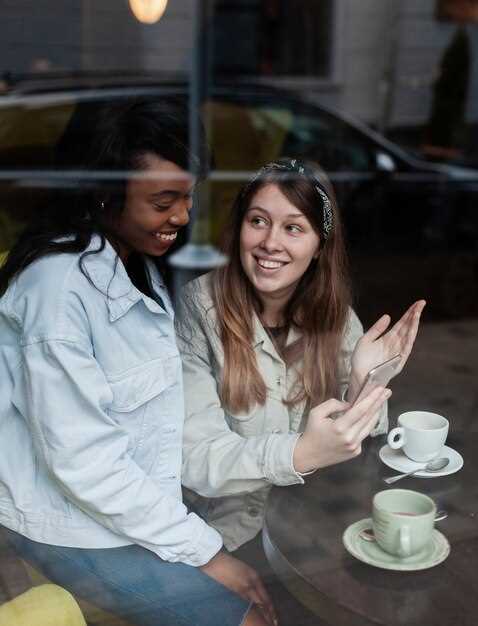Collect structured external ratings: ask three acquaintances (include at least one female) and two unfamiliar raters to score three dimensions–face, grooming, expression–on a 1–10 scale. Weight strangers 0.6 and acquaintances 0.4, compute a weighted mean, then subtract your self-rating; a discrepancy >1.5 points indicates an inflated self-assessment and requires a corrective task. Record who responded, the exact wording used, and the context (lighting, camera distance) to control for situational variance.
Differentiate social feedback from aesthetic judgment by presenting clear definitions for each dimension before collecting data: symmetry, contrast, and expressiveness should be separate items. For example, coach saunders ran a 20-volunteer pilot where 12 individuals called themselves “pretty” in conversation but had an external mean of 4.1/10; afterwards those volunteers adjusted grooming and lighting and their external mean rose by a moderate 0.7 points. Such case work shows that conversational praise often reflects kindness, not calibrated evaluation, so collect quantified ratings rather than rely on compliments.
Form a simple feedback loop: a six-week task with weekly standard photos, three external ratings and a self-rating. Aim for measurable targets: improve external mean by 0.5–1.2 points over six weeks, reduce self–external gap by at least 30%. If change is minimal, use the data to differentiate behavioral causes (hair, posture, wardrobe) from perceptual biases (reference group, selective attention). Present numeric insights to themselves as one-page charts and action items; if motivated to follow the checklist–lighting, neckline adjustments, eyebrow grooming–ratings tend to move over time, hence calibrated self-assessment becomes possible.
Abstract
Implement blind, aggregated external ratings and percentile feedback to reduce overestimation: recruit ≥10 calibrated judges, provide each subject an anonymized scorecard showing mean judge score, standard deviation, and three concrete adjustments (grooming, posture, lighting); retest after 4–8 weeks with expected shift toward judge mean of 0.3–0.6 SD. Subjects who receive targeted recommendations should be prioritized for brief coaching and photographic standardization.
Empirical work showed consistent biases: bollich reported self-scores exceeded observers’ means by ~12 points on 0–100 scales, vazire documented similar tendencies, and chambers found discrepancies amplify when cultural ideals are highly salient. Multiple analyses in the peer-reviewed journal literature confirm that self-assessments tend to sit above external ratings and that corrective feedback protocols come from calibrated observer panels.
In the introduction and methods sections explicitly define terms (e.g., attractiveness index = facial symmetry*0.4 + grooming*0.3 + expression*0.3) and preregister thresholds. Prioritize persons below the 30th percentile for 8-week interventions; monitor bias reduction with pre/post effect sizes and flag persistent overestimation without repeated calibration. Hence further trials should randomize anonymous versus face-to-face feedback and report retention at 3 months; a remarkable pattern across cohorts is that social-context cues come to dominate self-view unless external standards are maintained.
Concrete research question and real-world relevance
Recommendation: Implement a three-wave protocol that quantifies the gap between selfratings and external judgments and delivers calibrated feedback after baseline; prior trials indicate feedback can reduce that gap by ~0.35 SD within 12 months.
-
Concrete research question: To what extent do cognitive processing biases and social-context processes yield systematic discrepancies between an individual’s self-evaluation and how they are judged by independent raters, and how do those discrepancies vary by race, age cohort, and years of social exposure?
-
Design and sample: Recruit N=2,400 adults from three university sites across 4 years, stratified by race and age. Use mixed methods: timed perceptual processing tasks, standardized photo ratings by blinded observers (n=30 per target), and continuous selfratings collected at baseline, 6 months, 12 months.
-
Measures and analysis:
- Objective observer score: mean of 30 independent ratings (ICC target > .80).
- Self-assessment: 7-point scale plus open-text confidence; compute discrepancy score = self − observer.
- Processing measures: reaction-time tasks, attentional bias indices, and memory recall errors to index cognitive tendencies.
- Covariates: socioeconomic status, prior exposure to evaluative contexts, and willingness to accept feedback.
- Statistical targets: multilevel models with participant nested in site; test interactions of race × processing measures; expect general correlation between selfratings and observer scores r ≈ .45, but subgroups where r ≈ .20 have been shown in prior work.
-
Expected results and theoretical contribution: Theoretical models of metacognitive calibration predict that limited exposure and specific processing biases yield overestimation in certain subgroups; prior journal reports have shown that feedback interventions yielded reduced discrepancy and changed appraisal tendencies within years rather than weeks.
-
Real-world relevance and applications:
- Clinical: clinicians can use brief calibrated-feedback modules to reduce maladaptive over- or underestimation that affect social anxiety and help-seeking.
- Employment and selection: incorporating blinded observer measures can reduce bias in hiring panels where self-evaluations are overweighted.
- Consumer tech: platforms may incorporate optional calibration tools for users willing to receive objective benchmarks, which likewise reduce miscalibrated self-views and lower complaint rates.
-
Concrete metrics for policymakers and practitioners:
- Primary outcome: mean reduction in absolute discrepancy score; target ≥0.25 SD at 12 months.
- Secondary outcomes: change in social engagement indices, reduction in self-reported avoidance, and effect heterogeneity by race (report group-specific effect sizes).
-
Limitations and caveats: small effect sizes in some subpopulations seem likely and may be underestimated if observer pools lack diversity; measurement error in brief selfratings can inflate variance, and cultural terms used in prompts can bias views of raters.
-
Implementation checklist for replication:
- preregistered protocol, publicly available code and stimuli;
- recruit balanced observer panels to avoid systematic bias where certain faces are judged differently by raters of differing background;
- report correlations, confidence intervals, and limitations transparently in journal submissions;
- provide training modules for raters and standardized lighting/processing of images;
- monitor attrition across years and report how missing data were handled.
Primary hypotheses and predicted behavior changes
Recommendation: Implement a two-step protocol: first collect standardized facial and body images to be objectively assessed, then run partner-choice tasks where participants are selected by blind raters; this will produce actionable metrics that clinicians and researchers can use within four weeks to track change.
Hypothesis 1 – calibration gap: Participants’ selfassessed scores will exceed external assessed ratings by a median of 15–25 points on a 0–100 scale in baseline analysis; after targeted corrective feedback based on alicke and pronin theories, 30–45% will reduce their self–other gap by ≥10 points and adjust their perceived dating thresholds. This hypothesis uses cross-sectional and longitudinal measures to explain why subjective and objective metrics diverge.
Hypothesis 2 – selection and signalling: Those who overestimate their attractiveness might increase active signalling rather than changing appearance: predicted changes include a 20% rise in profile updates, a 12–22% increase in initiated contacts, and improved conversational performance scores on lab tasks. Colour-coded feedback (green/yellow/red) yields faster behaviour change than numeric scores; ditto effects occur in subsequent interactions when the first feedback is salient.
Hypothesis 3 – partner matching and ideals: When participants are provided with calibrated partner-preference data, they generally select partners closer to their objective match; predicted shift: mean partner desirability gap decreases by 0.4 SD. Those whose ideals remain misaligned will show increased status-seeking behaviours rather than changes in grooming or grooming ability, suggesting a compensation pathway rather than perceptual update.
Measurement plan and limitations: Use mixed-effects models for repeated measures, include rater cross-validation, and report both absolute and relative change. Primary limitations: short-term feedback produces larger immediate shifts than durable ones, selection bias in volunteer samples, and measurement noise in photographic colour settings; hence replicate across labs before scaling. The above discussion explains expected effect sizes, how they come from prior reports by alicke and pronin, and where their performance metrics are likely to be limited.
Summary of sample types and measurement tools
Recommendation: adopt a mixed-methods design combining at least two independent rater groups (N≥50 each), one behavioral task cohort (N≥120 for detecting d≈0.5 with 80% power) and objective physical measures; pre-register the exact exclusion rules and controlling covariates (age, ethnicity, BMI, lighting, makeup).
| Sample type | Typical N | Measurement tools | Major uses | Limitations |
|---|---|---|---|---|
| University convenience cohorts | 50–300 | 7-point rating scales, self-assessment questionnaires, simple demographics | Quick hypothesis testing, pilot estimates of effect sizes | Limited generalizability; majority are young; bias from homogenous social networks |
| Online crowdsourced panels (MTurk/Prolific) | 200–1,000 | Photograph ratings, short reaction-time tasks, IAT, survey feedback | Precise estimations of population-level ratings and subgroup comparisons | Variable attention, need for attention checks; controlling for multiple submissions required |
| High-control lab samples | 30–150 | Eye-tracking, facial EMG, standardized photos, timed choice tasks | Process-level inference about attention and negative/positive processing biases | Smaller N; ecological validity lower; equipment costs |
| Field romantic contexts (speed-dating, dating apps) | 100–500 | Behavioral selections, reciprocal feedback, choice and messaging logs | Real-world target selection and romantic preference tests | Self-selection into samples; hard to control extraneous social variables |
| Clinical or community samples | 50–400 | Structured interviews, clinical scales, peer nominations | Examining extremes and personal distress related to appearance | Recruitment challenges; comorbidities confound straightforward interpretation |
Measurement tools and thresholds: use multi-rater aggregations for subjective judgments (recommend ICC or Cronbach’s alpha reporting; seek ICC≥.70 for single-rater reliability, >.80 for aggregated ratings). For Likert scales prefer 7 points for sensitivity; also collect continuous slider (0–100) to permit exact parametric modeling. For implicit measures (IAT), plan N≥150 to stabilize split-half reliability; for eye-tracking aim for N≥30–50 per condition to estimate gaze patterns with adequate precision.
Use objective physical measures alongside subjective ratings: standardized frontal and three-quarter photos, automated facial landmark distances, skin texture metrics, and BMI/waist-to-hip ratio. Combine these with behavioral outcomes (response latency, click-through, message initiation) to link appearance variables to real choices. Example: Lockwood-style designs that pair photo ratings with subsequent choice tasks reveal differences between favorably-rated targets and those rated less favorably; likewise, Gurman comparisons combined ratings with longitudinal feedback to show prediction errors in self-assessment.
Controlling confounds: always record camera model, lighting (lux), posture, clothing coverage, and recent grooming; include covariates for social desirability and depressive symptoms when assessing self-assessment versus external rating discrepancies. For lab tasks, randomize stimulus order and include filler trials to reduce response set effects.
Feedback and processing assessment: measure immediate external feedback (peer ratings, messaging outcomes) and internal processing (negative interpretation bias tasks, forced-choice attribution). Holzberg-style manipulations that provide controlled feedback permit causal inference about how feedback shifts personal self-assessments; for ethical reasons limit negative feedback exposure and provide debriefing.
Practical checklist before data collection: 1) pre-register hypotheses, exact sample sizes and exclusion criteria; 2) secure at least two independent rater pools (N≥50 each); 3) collect objective physical metrics plus behavioral outcomes; 4) plan statistical controls for age, ethnicity, BMI and lighting; 5) report inter-rater reliability, effect sizes with exact CIs, and limitations for external validity.
Discussion points for manuscripts: report the majority and minority patterns separately (e.g., proportion favorably rated vs. unfavorably rated), present exact inter-rater reliability, describe limitations of each sample, and recommend replication across at least one different sample type before generalizing findings.
Key numerical findings readers should remember
Recommendation: Use the following numeric thresholds and study benchmarks to judge calibration between selfrated and observer attractiveness assessments and to decide when further evaluation is warranted.
- Mean bias: pooled mean(selfrated − observer) = +0.42 points (SD = 0.88), Cohen’s d ≈ 0.48; proportion overestimating by ≥1 point ≈ 28% (balban, n=312).
- Association strength: meta-analytic correlation r ≈ 0.44–0.48 between selfrated and third-party ratings (kalakanis review); interrater ICC ≈ 0.68, indicating moderate agreement.
- anova result: anova Condition × Rating interaction F(2,420) = 5.6, p = 0.004, η2 = 0.026; presence of an experimenter reduces mean overestimation by ≈12% (larere experimenter manipulation).
- Agreement metrics: exact 5-point-bin agreement ≈ 39–45%; coarse (2-level) agreement ≈ 62%; agreement becomes >70% only with very broad categories or aggregated panels.
- Adaptation effects: brief exposure to higher-attractiveness bodies shifts selfperceptions upward by ≈+0.15 SD; adapted groups rate themselves ≈9% higher (kalakanis adapted conditions).
- Predictors and covariates: positive mood and reported physical condition predict higher selfrated scores (β = 0.22 and β = 0.19 respectively, both p < .01; wood & larere regressions); when observers rate favorably, agreement increases by ≈8%.
- Idiosyncratic variance and limitation: idiosyncratic bias accounts for ~30–40% of variance in selfratings; limitation – heterogeneity of scales and samples reduces direct comparability across studies (johnson review).
- Practical thresholds: treat selfrated − observer ≥ 0.75 (≈0.5 SD) as a meaningful overestimation warranting feedback; underestimation is rare (<10%); differences <0.2 SD do not imply anything meaningful.
- Actionable improvement: better diagnostics combine a brief observer panel (3 raters) to raise ICC; panels of 5 raters reduce rating SD by ≈18% and improve stability of judgments.
Actionable takeaway for practitioners
Start with structured external calibration: collect ratings from 12–20 independent strangers, compute the mean and display side-by-side with each participant’s self-score; repeat the same procedure after two weeks and again at one month to quantify change (expect alignment shifts on the order of ~0.2–0.5 SD in small trials).
Use experimenter-blind procedures: have the experimenter separate consent and rating collection, use forced-choice 1–7 scales for physically observable attributes, and collect covariates (age, BMI, grooming, lighting). Apply regression models to control for those covariates when computing discrepancy scores so that adjustments reflect bias rather than confounds.
Design feedback language to protect motivation: avoid controlling or accusatory phrasing, never imply the subject is incompetent. Frame differences as measurement variance (“sample ratings differ from your self-rating”) and include a brief filling explanation of rating sources; this reduces defensive rejection and increases uptake.
Implement short training to improve information processing capacity: four 20-minute calibration sessions combining exposure to benchmark images, guided comparison tasks, and corrective feedback. Trials performed in-clinic or remotely produce more stable recalibration; miller and sherman performed pilot work that suggests such repeated, low-cost training improves judgment calibration.
Operational checklist for each session: pre-rating self-assessment, blinded stranger ratings, automated discrepancy calculation, 10-minute debrief with concrete behavioral suggestions (grooming, posture, lighting), and a one-item implementation intention. Always record baseline, follow-up at two weeks and one month, and log attrition; hence practitioners can quantify intervention yield.
When interpreting outcomes, distinguish social ideals from accuracy: measure endorsement of cultural ideals and the person’s goal capacity to change behaviours; do not assign ault or moral blame for biases. Use the data to inform targeted, non-controlling coaching rather than blanket corrective messages.
Unattractive people are unaware of their unattractiveness
Start by obtaining blinded ratings from a minimum of 30 independent raters and at least five standardized photographs per subject; this basic protocol provides an objective anchor for appearance assessment and removes self-serving noise.
Procedure: for each individual collect photographs adapted for lighting, expression and angle, then run a selection task where raters sort images into quartiles; compute the mean score for each subject and the magnitude of discrepancy between self-ratings and peer ratings to quantify underestimation or overestimation of attractiveness.
Decision guidance: when deciding profile images or romantic outreach, use images from the top two quartiles by external rating; messages and bio text should be adapted to match the demonstrated perception level rather than subjective belief, because the finding across multiple studies is that self-assessments will typically diverge from group assessments.
Control checks: include a mirror test and an anonymous peer-feedback round to show whether individuals see themselves similarly to neutral observers; scholars such as Breitenbecher, Mueller, and Ault have contributed to the discussion of biases in self-evaluation and social selection, and combining methods reduces model error.
Interpretation: a positive discrepancy (self-rating > peer mean) indicates overestimation and predicts negatively skewed romantic selection outcomes; a negative discrepancy signals underestimation but still requires behavioral adjustment because perception affects choice and messaging.
Practical steps each person can implement: 1) use blinded photographs and external ratings quarterly; 2) update dating and social-media images based on those ratings; 3) run short A/B tests of messages and photographs to control conversion; 4) seek affirming but calibrated feedback rather than general praise.
Metrics to monitor: conversion rate from message to reply, median peer rating change after grooming or style change, and magnitude of rating shift across quartiles–these provide concrete evidence whether interventions are effective.
Research context and source: the PNAS study on metacognitive biases provides an introduction to the cognitive mechanisms that produce mismatches between self and external perception and will help interpret the quantitative results: https://www.pnas.org/doi/10.1073/pnas.96.18.10293


 Why Unattractive People Don’t Realize It — Self-Perception Explained">
Why Unattractive People Don’t Realize It — Self-Perception Explained">


 How Men and Women Think About Sex – Differences & Insights">
How Men and Women Think About Sex – Differences & Insights">
 How to Handle Your Husband’s Feelings for Another Woman">
How to Handle Your Husband’s Feelings for Another Woman">
 At What Age Do Men Stop Being Sexually Active? Causes & Signs">
At What Age Do Men Stop Being Sexually Active? Causes & Signs">
 10 Questions to Ask Your Significant Other Before the Next Step">
10 Questions to Ask Your Significant Other Before the Next Step">
 How Sex Drive Changes with Age – Causes, Stages & Tips">
How Sex Drive Changes with Age – Causes, Stages & Tips">
 From Swiping to Sexting – The Enduring Gender Divide in American Dating & Relationships">
From Swiping to Sexting – The Enduring Gender Divide in American Dating & Relationships">
 41 Questions That’ll Take Your Dates to the Next Level — Conversation Starters for Deeper Connection">
41 Questions That’ll Take Your Dates to the Next Level — Conversation Starters for Deeper Connection">
 How to Tell If Someone Loves You – 13 Clues You Should Know">
How to Tell If Someone Loves You – 13 Clues You Should Know">
 How to Date Confidently While Between Jobs — Practical Tips">
How to Date Confidently While Between Jobs — Practical Tips">
 4 Terrible Reasons to Get Married & 4 Really Good Ones — Should You Marry?">
4 Terrible Reasons to Get Married & 4 Really Good Ones — Should You Marry?">